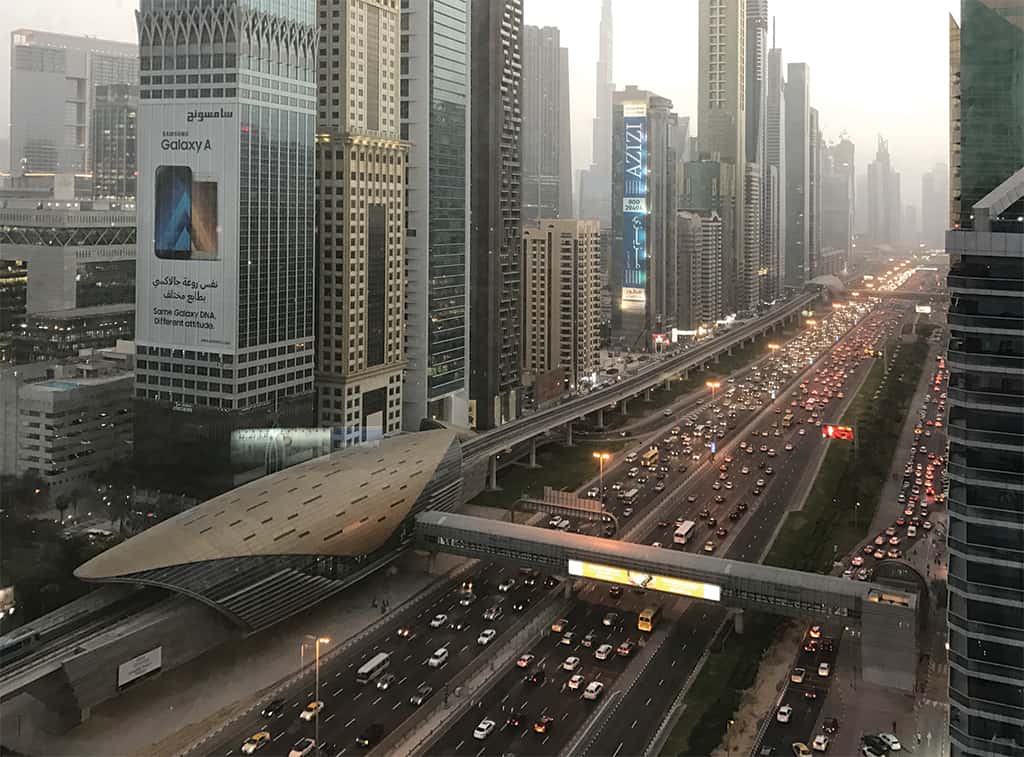E11 is the longest road in the UAE: it connects the entire country crossing six of the seven Emirates, from the Western border with Saudi Arabia to the Northern one with Oman. The road has different names in different Emirates; in Dubai, the E11 is called “Sheikh Zayed Road” and it runs through the hearth of the city for more than 70 Kilometers, connecting most of the key city destinations.
While being one of the most scenic drives in Dubai, Sheikh Zayed Road is also one of the most congested streets, with more than 400,000 vehicles per day and peak of 35,000 vehicles per hour in both directions. These flows are surely encouraged by the great capacity of the street, which currently in some sections has up to eight lanes per direction. The road connects linearly the entire city, creating a barrier that often cuts the city in two parts. For pedestrians, it is mainly possible to cross using the air-conditioned bridges in correspondence of the red line metro stations. The frequent junctions and flyovers are analyzed in depth in the following pages.
It is noteworthy that Sheikh Zayed Road is a test-bed for innovative solutions: from the introduction of Salik, an automatic toll system that collects road fares seamlessly, implementation of the first metro line in the country, the ongoing test of real-time parking indicators on the frontage roads, to the future plan for a continuous cycle lane along the entire length of the metro line.
Every junction on Sheikh Zayed Road differs from the other in shape and configuration. However, by looking at their size and number of maneuvers it is possible to find significant similarities and group them into four main categories: (1) very large with all possible connections; (2) large junctions that, despite their size do not satisfy all connections; (3) compact junctions with reduced complexity and (4) singular junctions that have all types of connections while being very compact.
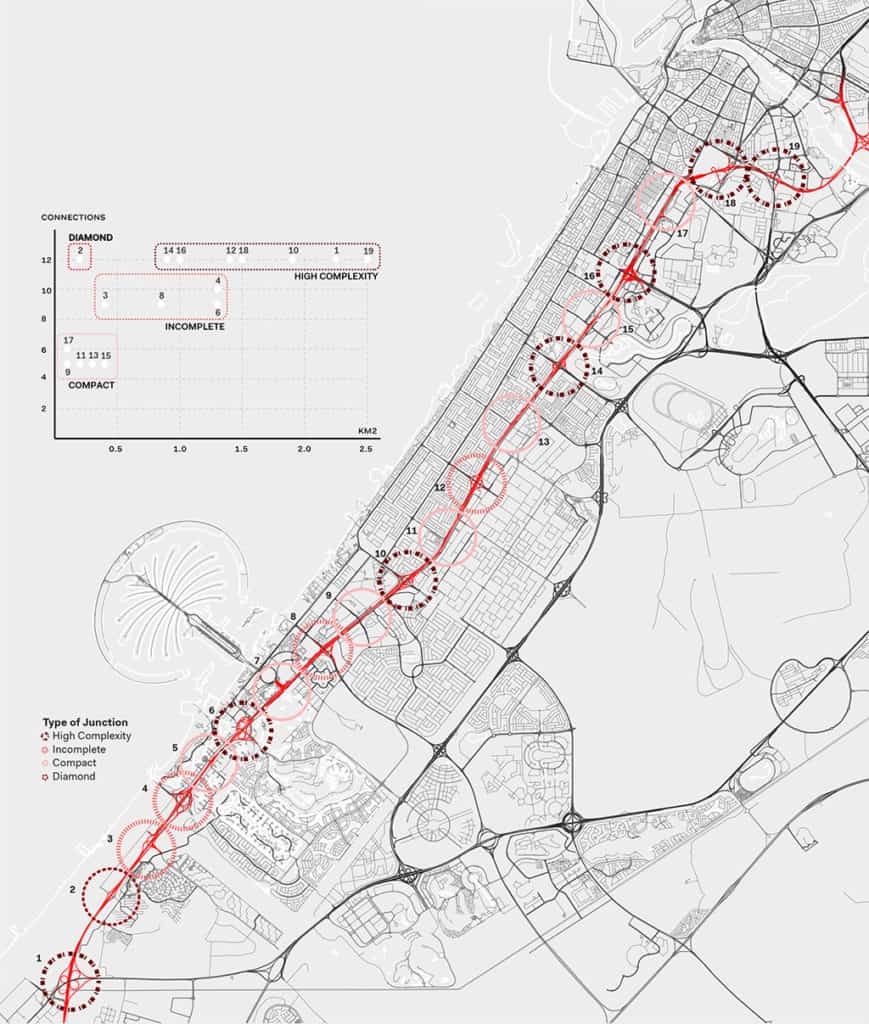
● high complexity junction
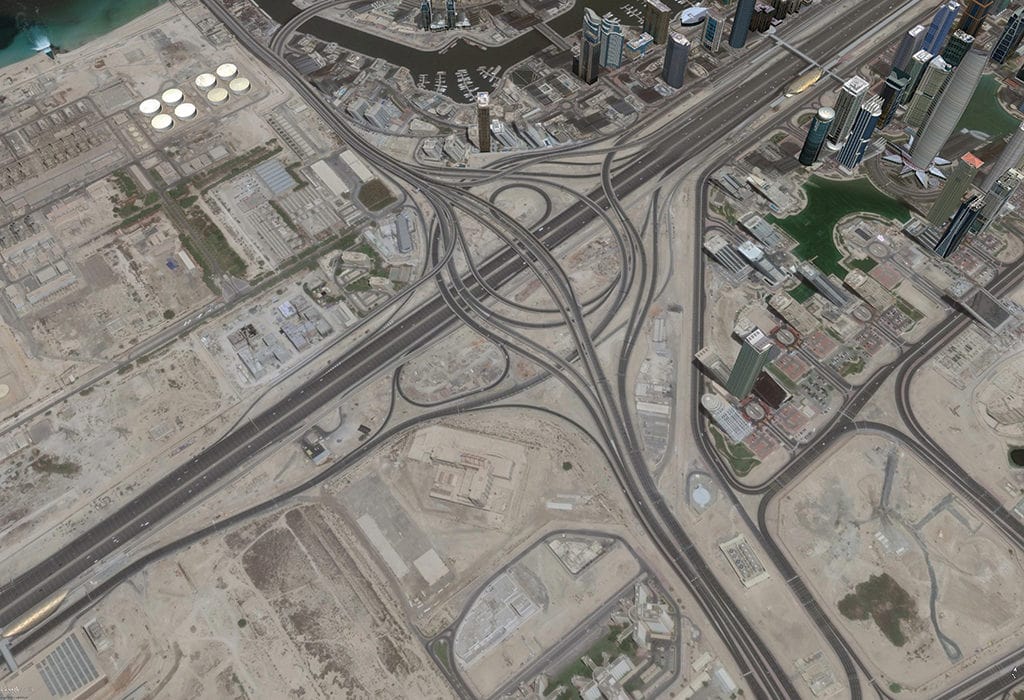
peripheral context, 12 connections
This category represents the majority of junctions along Sheikh Zayed Road; very large intersections with three or four levels and the red metro line running through them. In order to accommodate all maneuvers, the size of junctions increases significantly, reaching up to 2.00-2.50 Sq. Kilometers, even in neighborhoods close to Downtown, Mall of the Emirates or Marina with high land prices.
● incomplete junction
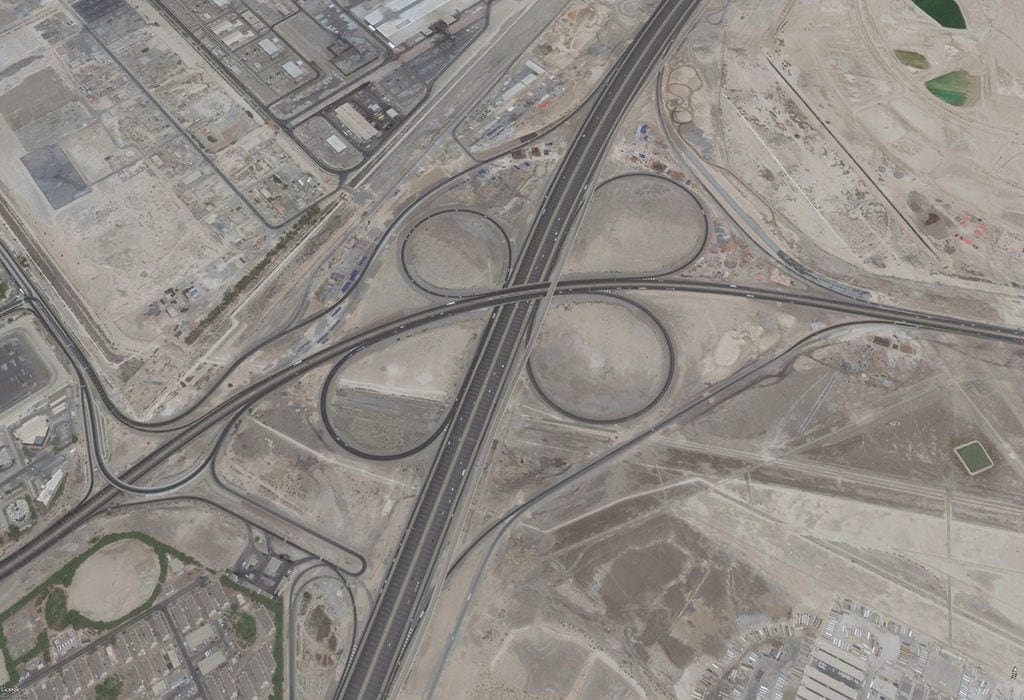
tall towers +low density context, 10 connections
This category is similar to the previous one, however, due to the lack of available land or technical constraints, not every maneuver is possible and some connections are missing. The main result is a decrease in travel options and subsequent lack of intuitiveness of the junction: drivers need to learn what to do at every junction in Dubai in order to reach their destination.
● compact junction
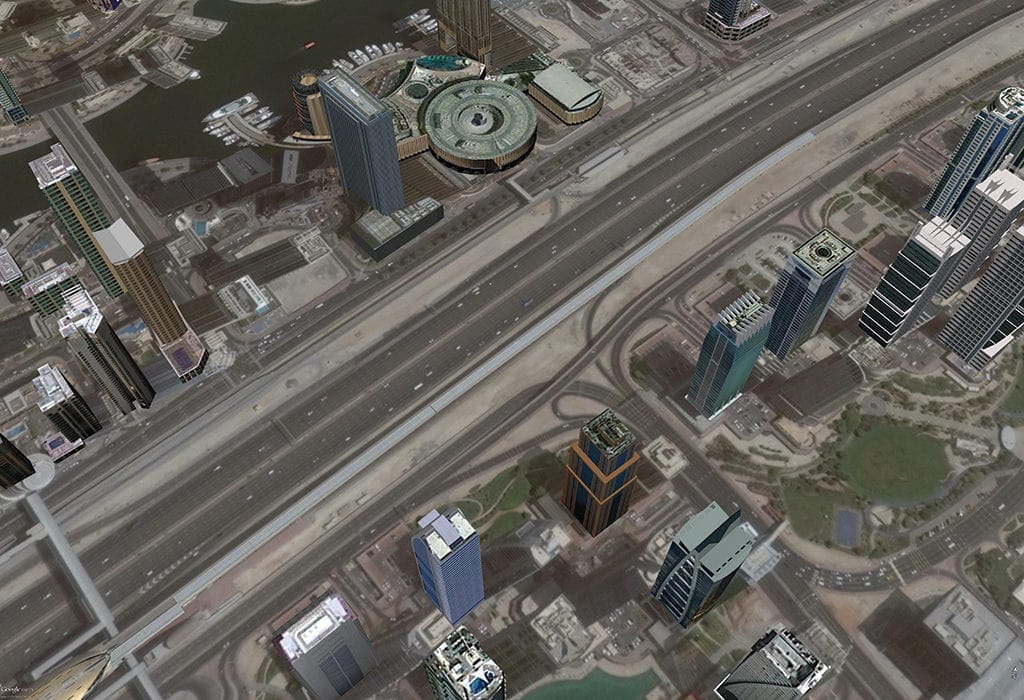
tall towers context, 5 connections
A category of more compact junctions with limited maneuvers is diffused along Sheikh Zayed Road, alternating in between bigger and more complex junctions. Generally, these junctions provide right-in / right-out connections to the surrounding neighborhoods or connections to long stretches of frontage roads, with few or no split-level solutions.
● diamond junction
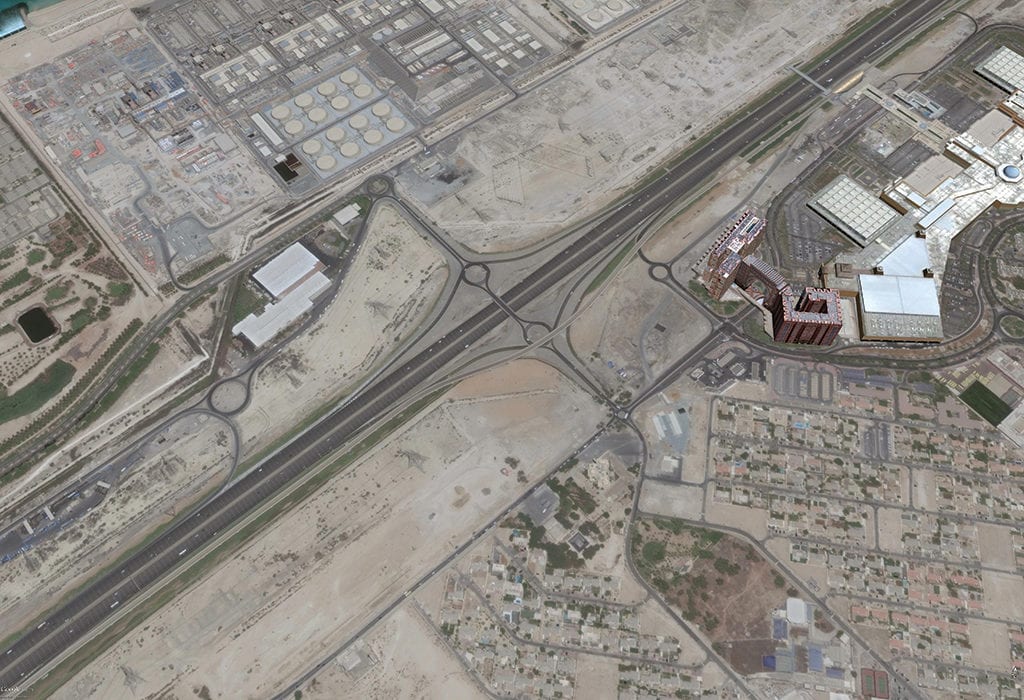
low density context, 12 connections
Right on the Southern edge of Ibn Battuta Mall, in correspondence of exit to Al Tahlia Road, there is a unique example of junction along Sheikh Zayed Road, very compact with all travel options for vehicles. This solution consists in a couplet of roundabouts at both ends of the bridge overpassing the highway.
